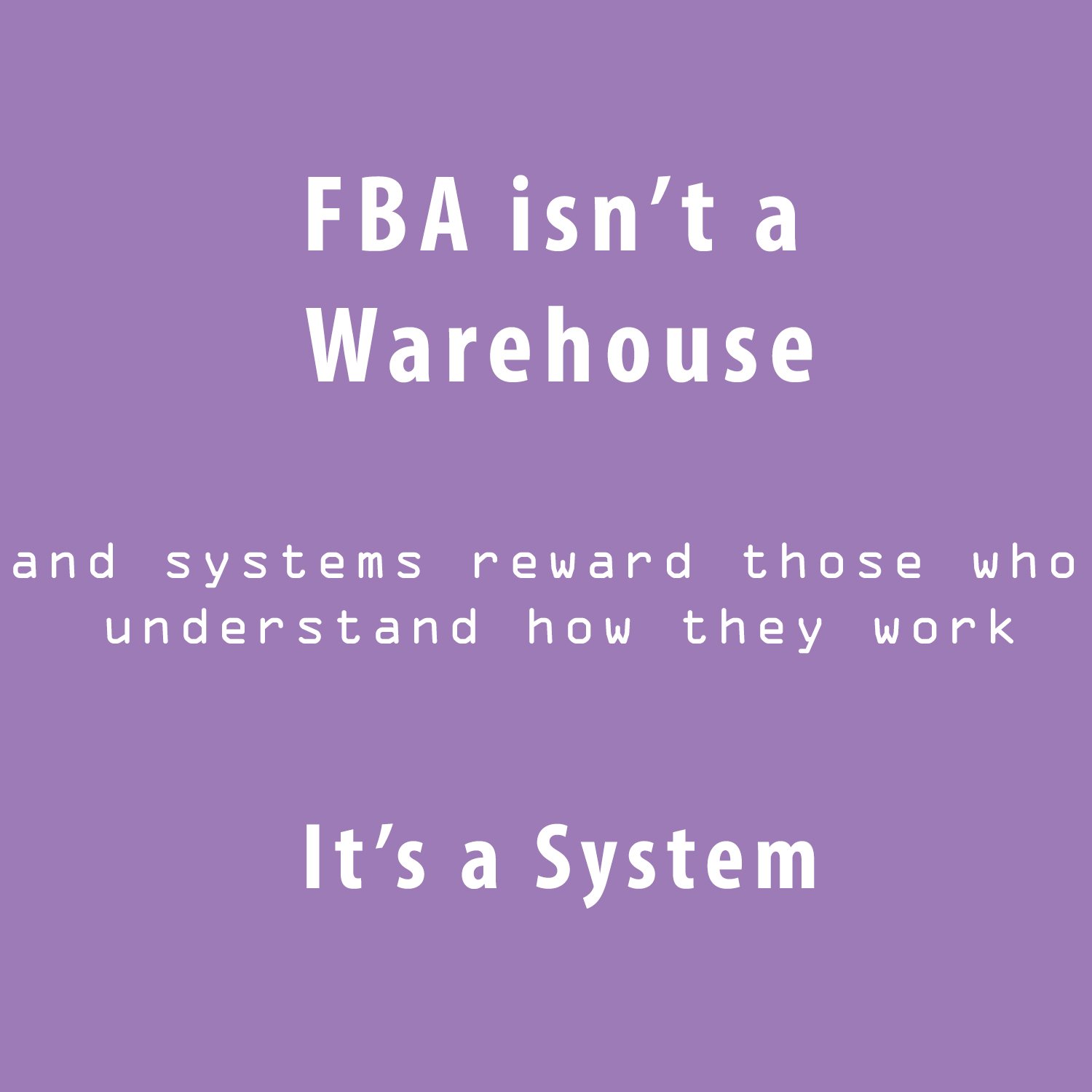FBA isn’t a warehouse - It’s a System.
Subtitle: Why understanding how Amazon’s fulfilment model really works is key to scaling profitably.
Most sellers think of FBA as a warehouse.
You send products in.
Amazon stores them.
When an order comes in, they pick, pack, and ship it.
Simple… right?
Not quite.
FBA is not just a warehouse.
It’s a system.
And like any system, it has rules, limits, and logic.
If you treat FBA like it’s just storage, you’ll lose money.
But if you understand how it works — and play to its strengths — it can become your biggest asset.
The Problem with the “Warehouse Mentality”
Warehouses are passive.
You store things until you need them.
But FBA is active.
It tracks how fast you sell.
How efficiently you use space.
How often your shipments arrive late, short, or unprepped.
It doesn’t just sit there waiting.
It’s evaluating — constantly.
And the result?
It rewards efficiency.
And it punishes waste.
How FBA Rewards the Right Behaviour
FBA is built to serve customers fast.
That means it has no interest in becoming your backup warehouse.
So what does it reward?
Sell-through velocity
(You get more capacity if your stock moves efficiently)Accurate forecasting
(You maintain IPI and avoid restrictions)Clean prep
(No delays, no penalties, no chaos)Proper ASIN mix
(You’re not clogging the system with dead weight)Smart use of restock limits
(You ship the right SKUs, not just “whatever fits”)
In short: the better your systems, the better Amazon treats you.
What Happens When You Get It Wrong
Sellers who treat FBA like a traditional warehouse often run into:
Overstocking fees
IPI score drops
Restock limit restrictions
FBA removals
Delayed shipments and stockouts
Cash tied up in slow-moving inventory
All of which lead to lost sales, wasted ad spend, and — worst of all — instability when you're trying to grow.
Understanding the System = Unlocking Growth
FBA’s not broken.
It’s working exactly as designed.
It just wasn’t designed for sellers who wing it.
The most successful Amazon brands aren’t “hustling harder.”
They’re managing smarter — because they understand the rules of the game.
And once you understand how FBA works, you can:
Plan inventory to fit within capacity limits
Use FBM or 3PLs for long-tail SKUs
Automate forecasting and restock logic
Prevent ad waste by keeping top sellers in stock
Preserve profit by avoiding unnecessary fees
What We Do at Amazency
We help sellers turn FBA from a pain point into a performance driver.
With our Operational Systems Service, we help 7–8 figure brands:
Build FBA workflows that align with Amazon’s systems
Forecast more accurately and avoid restock panic
Prevent stockouts and overstock
Create clean dashboards to track what matters
Make the back-end as calm and efficient as the front-end looks
FBA works best when your systems work with it — not against it.
Final Thought
You don’t need to fight FBA.
You need to understand it.
Because it’s not just a warehouse.
It’s a system.
And systems reward those who respect how they work.
Let’s talk.
👉 Reach out to Amazency today for a free consultation!

